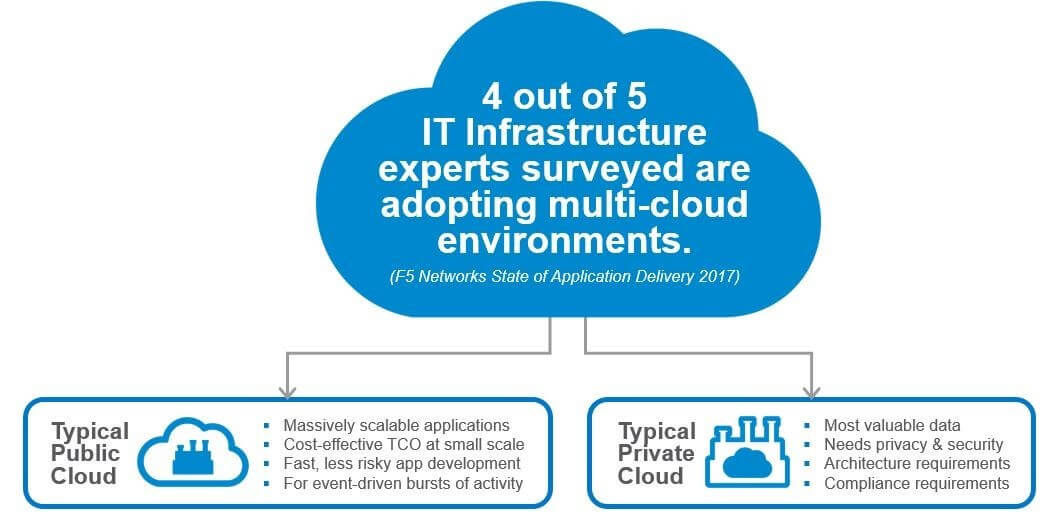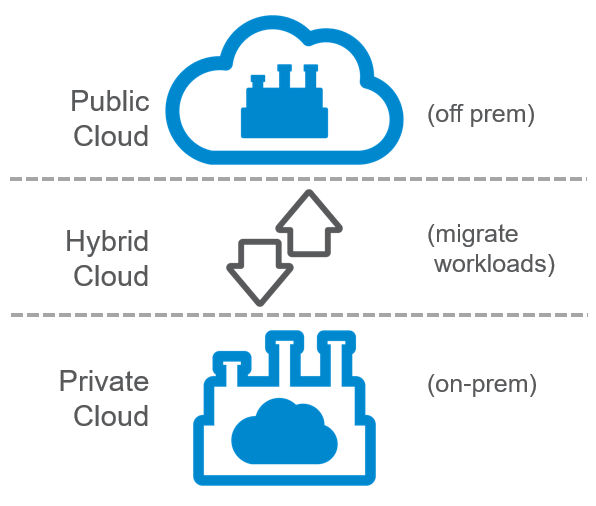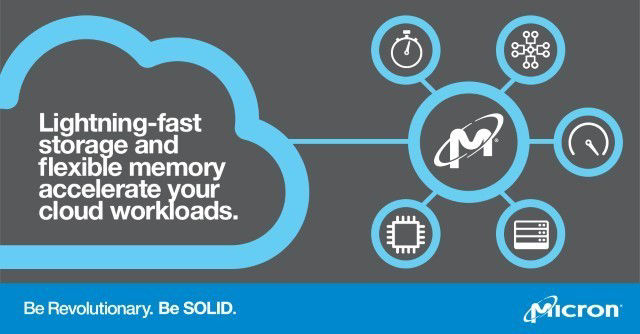Login / Register
Data managers have decided that the cloud is how IT is done. In a new Gartner forecast, the analyst firm predicted that the world's public cloud services providers will generate $260.2 billion in sales this year, an 18.5-percent annual increase. By 2020, that figure is expected to jump to $411.4 billion. And that’s just for public cloud.
What’s your cloud crowd? Your choices are many. There are multiple cloud development models: next-generation cloud-native apps on a PaaS layer and traditional apps running on infrastructure as a service are the big two. But cloud is an operating model, not where things run – and they can run in lots of places: public cloud, private cloud, a combination of both known as hybrid cloud, direct-connect public, co-located, hosted private cloud and more. Most enterprise cloud environments are complex, despite using the cloud to streamline IT. There’s more complexity in selecting the right private cloud platform. Your own raised floor? Colocation? Dedicated hosting? It’s a fluid situation. Where you are now versus where you see yourself in the next few years can be vastly different.

IT looks hybrid and multi-cloud
The common beginning cloud experience is IaaS in a hybrid environment of cloud and legacy. Trying out the public cloud typically begins with a small pilot program and then migrating more workloads once KPIs are met and the pilot is successful. Even once you’re a public cloud customer, you might have reasons to keep some workloads on your private cloud, particularly those with low latency and high security requirements, or compliance requirements (e.g., Sarbannes-Oxley or other federal regulations). Data migration remains a constant as well. For instance, as workloads on the public cloud grow more massive, application owners often bring applications (or portions of them) back on-prem for cost and to take advantage of economies of scale.
Turns out, balancing on- versus off-prem cloud performance, compliance and security, for the best TCO has revealed the best response may be: All the choices. This was confirmed in a survey performed last year by F5 Networks where four out of five Infrastructure experts surveyed were adopting multi-cloud environments.
Hybrid cloud reflects the reality of managing a portfolio that can include new, cloud-native applications, public cloud services, as well as traditional workloads managed at the Virtual Machine level. Hybrid lets you place your compute and storage wherever it works best and migrate workloads when things change. It also allows you to continue deriving value from your legacy IT infrastructure investment while also taking full advantage of modern cloud platforms and services.

Hybrid cloud brings challenges
While hybrid cloud is the prevailing choice, it does bring some complications. In fact, “It’s more useful to look at hybrid cloud as a set of challenges rather than a specific deployment model,” said Forrester’s cloud expert Dave Bartoletti in a recent interview.
One challenge that Micron has heard from customers and others in the marketplace concerns modernizing on-premises systems; specifically, how to achieve cloud-like agility, low costs and efficiency. We draw on our deep relationships with many of the top cloud service, SaaS and XaaS (“everything as a service”) companies to stay in synch with cloud developments. We’re able to use our fast storage and persistent memory experience in building high-performance public and private cloud environments to help customers “cloudify” their on-prem cloud, such as moving from storage arrays to platform-attached flash with high-capacity solid state drives. Micron’s infrastructure for next-gen cloud and our partner ecosystem also help enable a foundation for organizations pursuing a unified cloud delivery platform.
Perhaps most importantly, both next-generation and more legacy focused IaaS architectures rely on directly connected storage managed by software. Cloud-native platforms generally provide data protection and scale through functionality built into data-services layers, and software defined storage (SDS) makes direct-attached the best choice for IaaS.
Here are some additional thoughts on the ways hybrid cloud complexity is driving innovation in IT management, monitoring and provisioning.
Challenge: Cloud Sprawl
When organizations lack control of or visibility into their IT resources, the results can be too many cloud instances on too many different cloud servers, even too many vendor relationships. It’s not only costly, but can compromise data security, integrity and concurrency. Cloud sprawl is more of a problem for clients who pay for it than to service providers; even so, some service providers are providing server tagging while others provide automatic scale-up/scale-down to help with sprawl. All providers allow you to set budget and performance thresholds.
Another cloud management improvement is to manage by workload, not where they run. Optimizing IT cloud infrastructure means understanding your workloads, where Micron has deep expertise. Look out for workloads that might have over-allocated resources or might have processes running around the clock on non-persistent functions. Delete or reduce resources for idle or forgotten workloads.
Challenge: Resource Provisioning
Though archiving data to the cloud was an early storage trend, now IT managers are replacing over-provisioning by providing and scaling cloud-based shared resources for peak demand. They are also consolidating workloads that exist across multiple environments. To manage this efficiently and without incurring downtime, the principals of good cloud computing can enable enterprises to adjust workloads dynamically between public cloud and on-premise environments. Automating the optimization of data location is a good job for AI-driven cloud-based systems platforms, says IDC. Many of the cloud services providers are also building out machine learning and AI platforms for their customers to integrate into application development pipelines. Micron is innovating to improve data science for these purposes.
Challenge: Application Performance
Moving applications to the cloud helps eliminate traditional, customized, over-provisioned, siloed infrastructure. But the massive horizontal scaling that the cloud promises may not benefit legacy applications that are not built to efficiently scale and take advantage of rapid elasticity. Application owners and IT managers have learned to categorize applications by their resource requirements and capabilities, and must consider when it makes sense to rewrite applications to take advantage of cloud capabilities. Creating and recreating dynamic pools of compute, storage and networking (or fabric) for multiple individual workloads on a shared platform on-demand is the heart of virtualization. Tunable storage can also enhance performance, endurance and lower latency on servers hosting cloud workloads.

Micron storage and memory
Whichever group you see yourself in, the ability to target your applications and workloads for best fit in the cloud will help keep you soaring. As a global leader in SSDs, Micron brings a breadth of storage capabilities directly to the servers hosting your cloud workloads. Micron’s fast flash storage and persistent memory, proven at some of the world’s largest and most innovative cloud companies, help boost workload and application performance. Read how working with cloud leader Alibaba on cloud and data center infrastructure won us its Delivery Partner of the Year award.